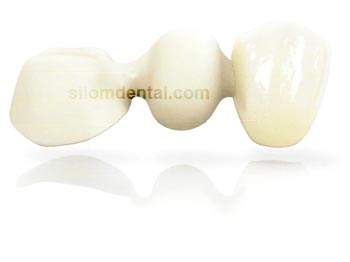 |
NobelProcera Bangkok, NobelProcera Thailand.
www.silomdental.com |
NobelProcera Crown
NobelProcera Laminate
NobelProcera Bridge Zirconia
NobelProcera Bridge Alumina
NobelProcera Bridge Titanium
NobelProcera Implant Abutment
NobelProcera Implant Bridge Zirconia
NobelProcera Implant Bridge Titanium

NobelProcera™ Bridge Alumina
|
|
NobelProcera Bridge Alumina Indications :
NobelProcera Bridge Alumina Contraindications :
|
|
1. Preparation
|
 |
2. Impression
|
 |
3. Laboratory procedures
|
 |
4. Cementation |
 |
HOME
l SERVICE
l DENTISTS
l TECHNOLOGY
l FACILITIES
l ABOUT US
l SITE MAP
PROMOTION
l PRICE&DURATION
l CONSULTATION
l FAQ
l LINKS
l MAP
l TESTIMONIALS
l OUR LAB
l RESOURCES
DENTAL BRACES
l LASER TEETH WHITENING
l IMPLANT DENTISTRY
l ENDODONTICS
l OPERATIVE DENTISTRY
l SEDATION DENTISTRY
COSMETIC DENTISTRY
l PROSTHODONTICS
l PERIODONTICS
l ORAL SURGERY
l PAEDODONTICS
l GP & ORAL EXAM
l OCCLUSION
DENTAL OFFICE
l DENTAL CLINIC
l COSMETIC DENTISTRY
l COSMETIC DENTIST
l TEETH BLEACHING
l TOOTH WHITENING
DENTAL CROWNS
l DENTAL IMPLANTS
l DENTAL TREATMENT
l DENTAL IMPLANT
............................................................................................................................. Copyright© 2004 SILOM DENTAL BUILDING. All Rights Reserved.
Local Call : 0 2636 9092-5, International Call : (+) 66 2636 9091, (+) 66 2636 9097
e-mail :silomdental@silomdental.com
Dental Implant, Dental Implants, Implant, Dental Implant Bangkok, Dental Implants Thailand, Implant Dental Center, Implant Bangkok Thailand
